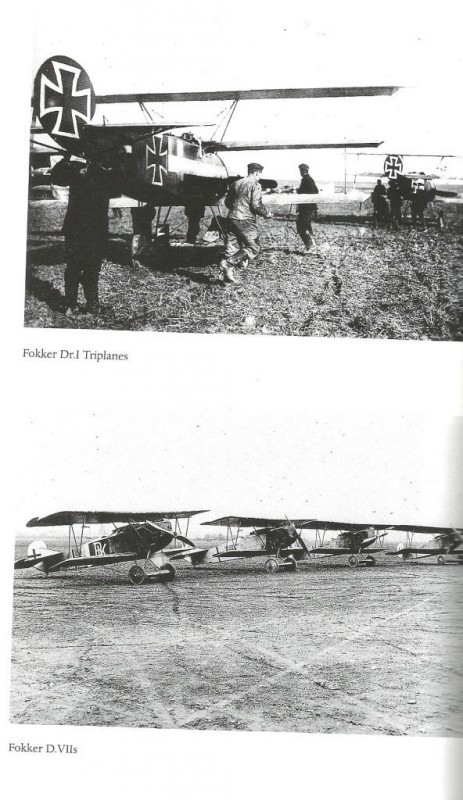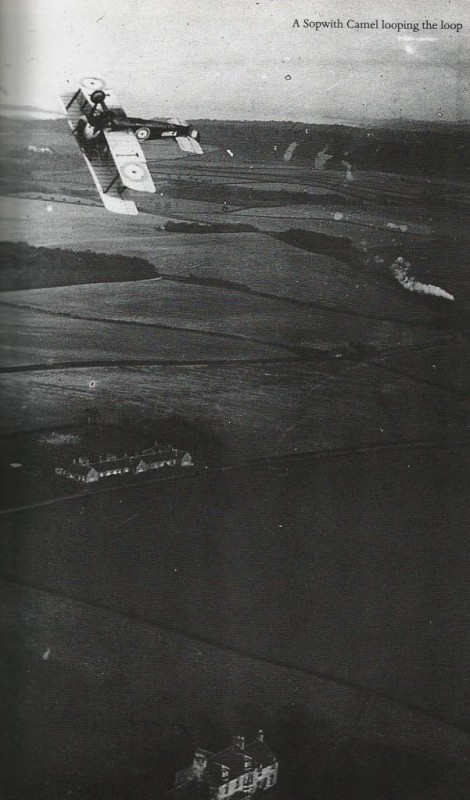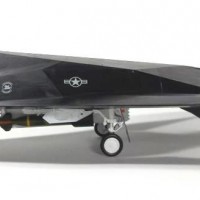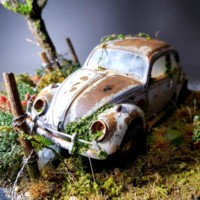Aces Falling: War above the Trenches, 1918
Aces Falling: War above the Trenches, 1918
by Peter Hart
Weidenfeld & Nicolson, London
386 pp., illustrated (hardback).
RRP £22.50 (UK)
In this book, Peter Hart tells the whole tragic story of the air war in 1918. Using the voices of the men themselves, he describes exactly what it was like to fight and die in the skies over the Western Front. At the same time he relates the air war to the fighting on the ground, and shows how developments in bombing and strafing not only brought a new dimension to the Great War, but also pointed the way to the wars of the future.
Hart is well-qualified to undertake the task described. He joined the Sound Archive of the Imperial War Museum in 1981, and as their Oral Historian he's responsible for interviewing veterans of all conflicts stretching from the Great War to the present day. He's an Honorary Fellow of the Centre for the First World War Studies at Birmingham University, and has appeared on many television documentaries on the First Word War. His previous books include, The Somme, Jutland 1916, Somme Success: the RFC and the Battle of the Somme, and Bloody April: Slaughter in the Skies over Arras, 1917.
The book is illustrated with more than thirty period photographs, and includes a number of detailed maps. (To note, the photographs herein are subject to copyright and are for review purposes only.) The book includes several hundred Notes on the Text, as well as a comprehensive Index.
Hart has the ability to present the details of events in the style mentioned above, providing a personal immediacy through first-hand accounts, but also as one that is more cinematic, where the reader is taken through the 'great strategies' of Haig or Ludendorff, and as though seeing the result of an order issued as it makes its way down the ranks, the reader (virtually) climbs into the aircraft with the crew as they begin a sortie.
Rather than describe the format further, it might be more useful to provide illustrations of the style and representative content.
“Flying reconnaissance aircraft deep over the lines territory was always a dangerous business, as Leutnant Fritz Kampfenkel and his pilot – always known colloquially in the German Air Service as “Emil” - discovered when they were attacked by two British scouts.
'Following warning shots from my “Emil”, I put my camera in a nook in my cockpit and made my light machine gun ready on its moveable track. At the sight of the first enemy fighter, whose speed was greater than ours – I saw the proverbial 'whites of their eyes' –and fired by the rules right at his engine. The second enemy fighter, right behind him, was a better shot, and from his stream of fire, I felt a shot pass along the right side of my chest. I gave thanks to my very talented pilot, who, with bold and deft turns, made us a more difficult target for our opponent. So, with no further hits, we returned unimpeded to our airfield. There, I was helped out of our 'crate', fortified with cognac and cigarettes, and driven to the nearest field hospital. The wound was cleaned and sewn-up.' (Leutnant Fritz Kampfenkel, Flieger Abteilung (A) 240, Imperial German Air Force.)”
__“(Captain James McCudden's) mechanical skills, gained during his years as an engine fitter, added a whole new dimension to the menace he posed to his adversaries. When new German models of the Rumpler and LVG reconnaissance two-seaters became virtually invulnerable to interception through their ability to fly far higher than the 19,000 – 20,000 feet that the SE5a could normally achieve, McCudden sought a technical solution. He acquired a set of non-standard high-compression pistons, which he successfully fitted to his engine to gain a huge increase in engine performance while trimming every spare pound of weight from his aircraft. His extra reserves of speed and height immediately began to take effect in a series of dispassionate victories. He became not only the top-scoring British ace but reached the fifty-victory milestone on 16 February.
'I saw a Hun two-seater running away east. For he had apparently seen me before I had seen him, for I was not expecting the Hun over, for the visibility was not good. But I suppose he was out for some urgent information. I now opened the throttle of the high compression Hispano and I overtook the LVG just as though he was going backwards, for I should judge my speed to be 20 miles faster level than his. I quickly got into position and although the LVG tried hard, I presented him with a very excellent burst from both guns, and then he went down in a vertical nose dive, and then past vertical onto his back. The enemy gunner shot out the machine for all the world like a stone out of a catapult and the unfortunate rascal seemed all arms and legs.' (Captain James McCudden, 56 Squadron)”
__“(RNAS pilot Major Roderic Dallas, following a skirmish in April) was surrounded by some of his pilots who did not at first realize that he had been wounded. Playing the wounded Australian hero perfectly, Dallas recounted his adventures to his rapt audience.
'While he was entertaining us with various descriptions in an amusing way, somebody said, 'What did that, Sir – a bullet?' and pointed to a little strip torn from his leather coat. 'Yes', said Dallas, 'they shot me!' and he lifted his coat to one side and the inside of his left thigh was all blood and raw meat and torn breeches. A bullet had come through the floor, hit a Lewis gun drum, spread itself and torn his thigh. 'Good God!' we said. 'You must get that dressed!' 'Yes,' said Dallas in his quiet way. 'Yes, I must get that dressed!' And he began hobbling away towards the sick bay. Then, after going some distance he half turned back and said, 'There's one in my heel, too!' (Second Lieutenant Cecil Usher, 40 Squadron)”
__
“Another pilot contributed some more ominous news.
'I had a numb inner feeling that something had happened to Richthofen. As I few back, east of Corble, I had seen a small machine on the ground on the other side of the lines that had not been there previously. The machine appeared to be red.' (Leutnant Richard Wenzl, Jasta 11)”
The encounters are set out in a timely sequence, following the campaign itself. As well as the events, we are given insights into the physical and mental states of the air crews, who undertook relentlessly dangerous missions over territories bristling with the latest technology on the ground and in the air.
Peter Hart has managed to write an enormously readable, exciting account of the men and machines during a critical, final period of the Great War. He does acknowledge that the scope of his text doesn't allow the contributions of the French to be noted, and that their contribution perhaps deserves a separate, similar treatment. However, as an otherwise inclusive history of the air war in 1918 as it pertained to the RFC and German Air Service, with contributions by the American, Canadian, and Australian air services, this book is highly recommended.
(The book is also available in softbound and Kindle editions.)







Definitely a book I shall add to my collection in 2015. Thanks Rob for the info!
Glad to hear it, Morne. I'm sure you'll enjoy it.
looks like some superb photos...especially the cover...and packed with info...thank yoiu
Packed full of detail and finely written.
The period between the start of Operation Michael on 6 March 1918 (the final German offensive) and the end of the war in November is actually the bloodiest time of the entire war, 1916 included. Looks like an interesting book.
As a military historian, you'd be particularly taken with the style and the content, I think. Would go for hardback or softbound editions though. Not sure if cheaper Kindle version has photographs.